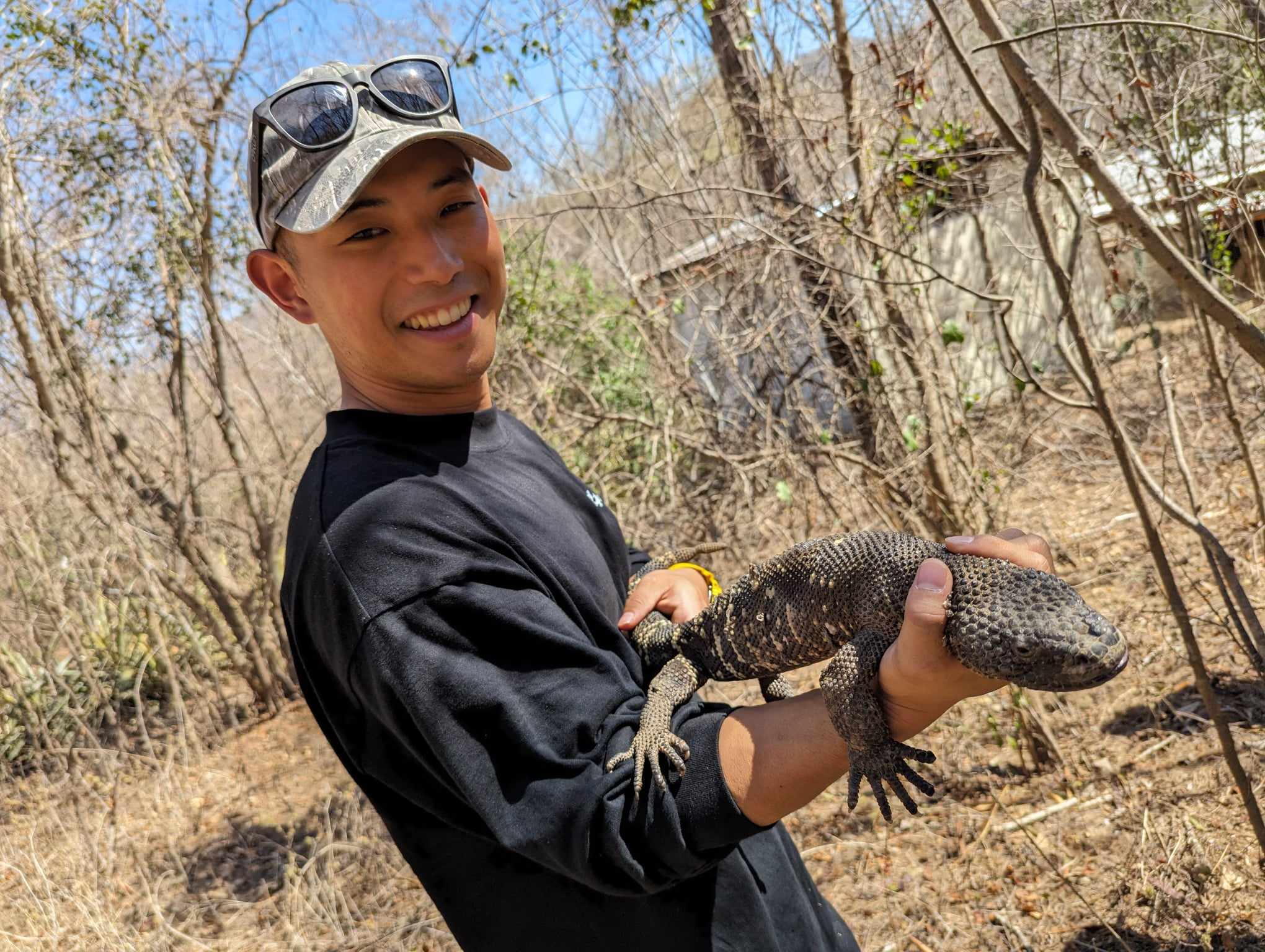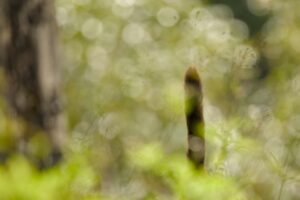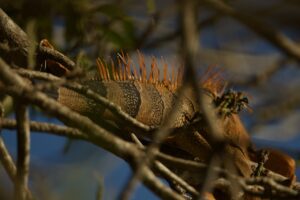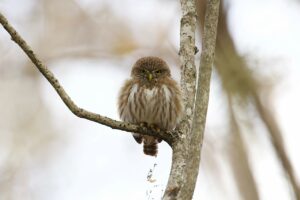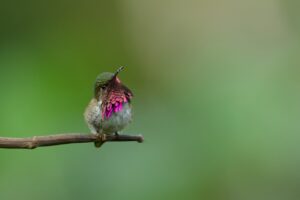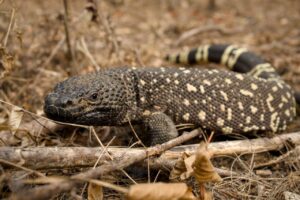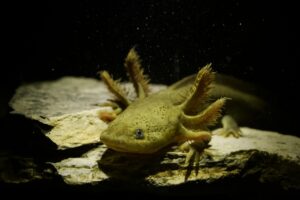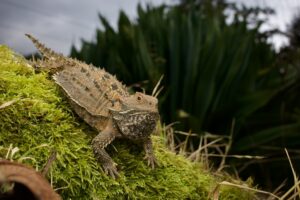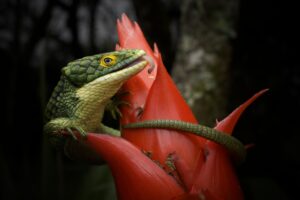This time, I observed the newly discovered Yambaru ground gecko (Goniurosaurus nebulozonatus). Although I had previously observed this species when it was still classified as the Japanese ground gecko (Goniurosaurus kuroiwae), I paid closer attention to the differences this time.
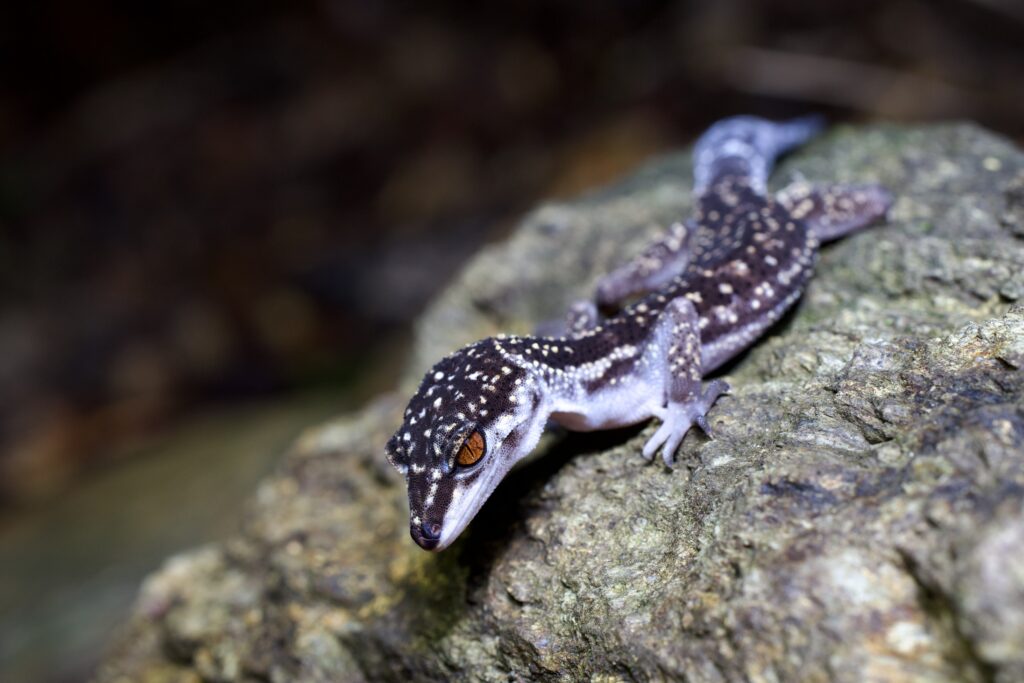
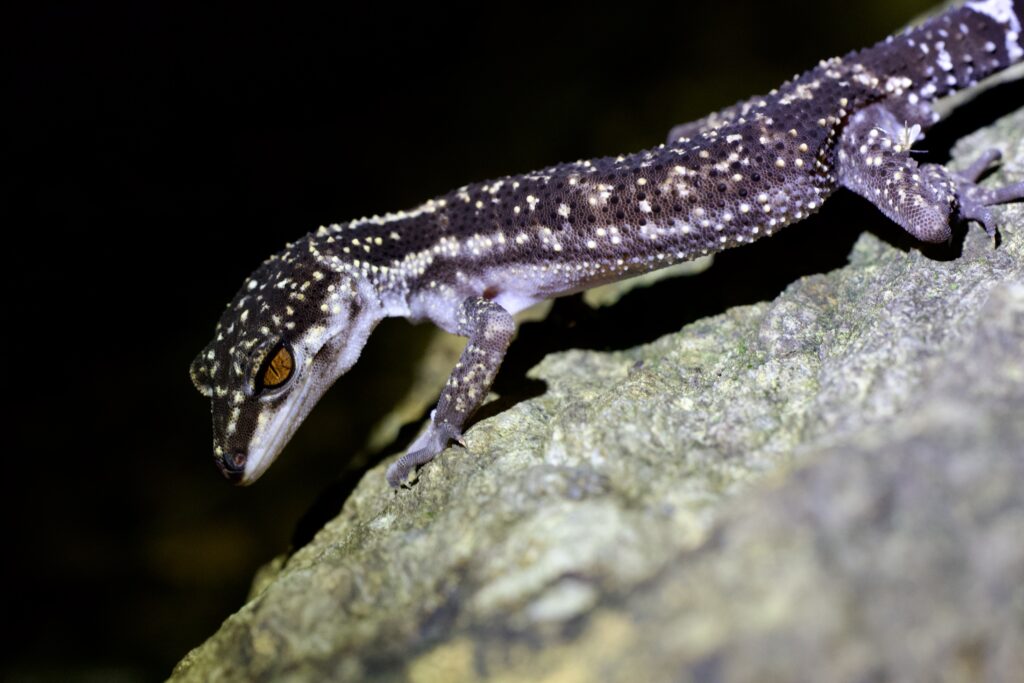
The first individual that appeared had a notable feature of the Yambaru ground gecko: the vertical stripe on its back often does not continue all the way down and tends to break. Rather than a pattern that breaks partway, this individual barely had any stripes on its back.
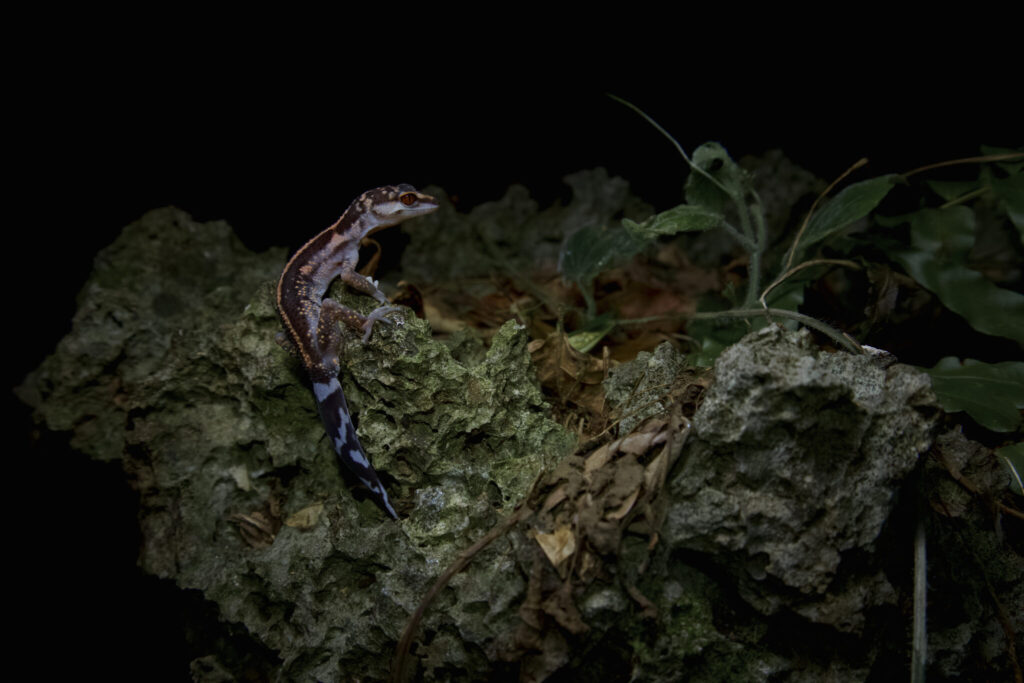
When compared to the Japanese ground gecko, which inhabits southern Okinawa, the differences were striking. The Japanese ground gecko has a vivid orange stripe running down its back.
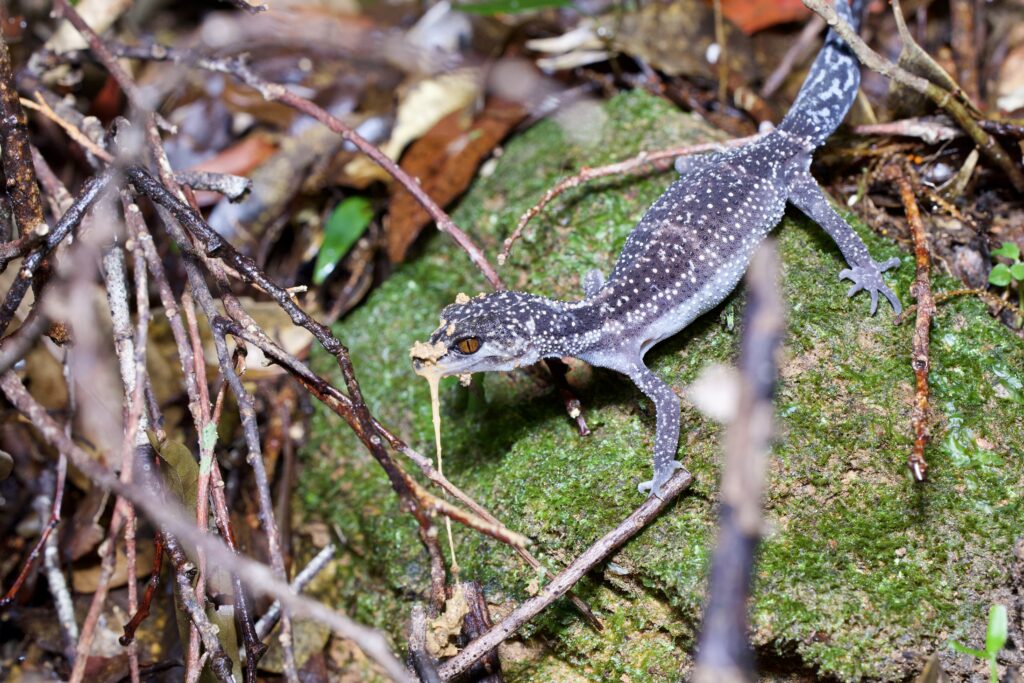
I also encountered another individual. At first, I thought it was eating something, but it appeared to have something dropped on its head, possibly bat droppings. Nature can be harsh.

Its belly was large, possibly carrying eggs, so I quickly took some photos and retreated. I caught a glimpse of the life of Yambaru ground geckos surviving in the harsh conditions of the Yambaru rain forest.

